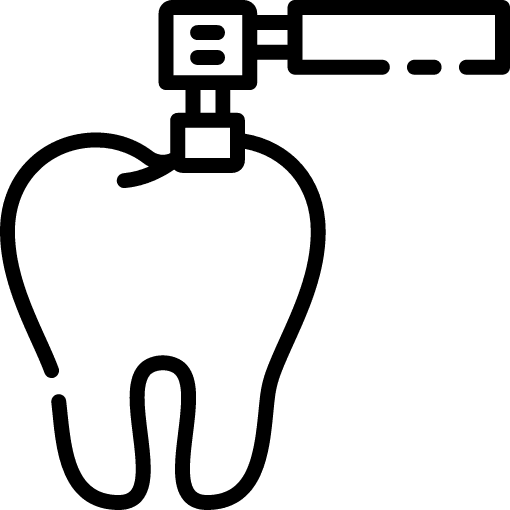Scaling and Polishing in Aberdeen
What is the difference and process
of scaling and polishing?
Plaque, a soft, sticky covering of bacteria, food, and saliva, and hard tartar deposits accumulated on the teeth over time are removed during teeth cleaning. Unfortunately, if tartar is allowed to accumulate on the teeth, it will create ideal circumstances for germs to flourish next to the gums. The main goal of scale and polish is to leave the tooth surfaces incredibly smooth and clean so that bacteria cannot adhere to them, and you have a higher chance of keeping the teeth clean during your usual dental hygiene routine.
Scaling and polishing Dentists in Aberdeen clean your teeth, reducing the severity of gum disorders and preventing them from occurring. If there are several stains on the outer surface of the teeth, they may seem lighter after scaling and polishing. There won’t be any changes after teeth cleaning if the intrinsic colour of the teeth is quite yellow or stained because the colour comes from inside the tooth.

What distinguishes scaling and
polishing from tooth whitening?
With time and continued ingestion of items that darken teeth, such as coffee, tea, red wine, or cigarettes, teeth might become more stained or yellow.
A cosmetic dentistry technique called teeth whitening helps to reduce tooth discoloration. However, dental plaque, tartar, and extrinsic stains on the teeth’s outer surface are removed during a scaling and polishing procedure.
Using an ultrasonic cleaning tool, the scaling procedure involves eliminating plaque and tartar from the area around the teeth and the gum line. Plaque and tartar will host germs that can lead to tooth decay and gum disease if they are allowed to build up.
However, teeth polishing leaves your tooth enamel glossy and smooth. It’s part of a regular cleaning appointment at many dental clinics. Teeth polishing doesn’t only come with cosmetic advantages. This procedure can improve your breath and prevent tooth decay when combined with scaling.

What steps are taken throughout the scaling and polishing procedure?
Scaling
Plaque and calculus deposits are removed softly and without damaging your teeth using specialised tools. The ultrasonic scaler employs vibrations to break up tartar that has solidified and adheres to and between teeth. Debris is also washed away with water spray. During the scaling process, the scaler may emit a high-pitched buzzing sound.


Polishing
After scaling, polishing is typically done to eliminate stains and make your teeth feel smooth and beautiful. A soft, rotating rubber cup is used to polish. A substance resembling toothpaste called prophylaxis paste is scooped up into the cup and rotated on the teeth.
To remove stains, plaque, and soft debris from your teeth, prophy jet polishing combines a pressurised air and water spray with sodium hydrogen carbonate powder. It may have a mildly salty flavour.
Is polishing and scaling painful?
When carried out according to the proper process protocols, scale and polish procedures cause minor discomfort. The only potential issue for the patient is minor sensitivity, which rarely persists after treatment but goes away in 24 to 72 hours if the patient follows the dentist’s recommended care regimen.
Scaling and Polishing Dentists in Aberdeen say that this procedure is uncomfortable only when the patient has disregarded oral care for an extended period, resulting in swollen, irritated, and bleeding gums. Regular dental visits are the most significant way to prevent pain because the calculus or tartar may be so deep that it denudes the root in the oral cavity after cleaning, necessitating more involved and costly dental procedures.


How often do I need to get it?
Scaling and polishing dentists in Aberdeen suggest that the procedure should be done every six months to maintain good oral hygiene. Even if you brush well, initial plaque and subsequent calculus development are sometimes inevitable.
This is dependent on each person’s unique oral health and lifestyle choices. Generally, unless the dentist advises differently, it is favourable to have biannual visits. However, several factors could necessitate more frequent professional cleaning, including Smoking, Diabetes, Tea, coffee, and wine stains, prior decay or gum disease, and poor breath.
What are the risks and potential problems?
Despite the significance of scale and polish for maintaining dental health, several known hazards or side effects are associated with this practice. These include eating limitations, gum recession, swollen gums, dental sensitivity, cavities in the roots, bleeding roots, and sore gums. These symptoms result from the necessity to scrape away dental deposits, which may be time-consuming. The procedure itself doesn’t carry many risks, and overall it’s advantageous for most patients to have it done to avoid more severe consequences.

